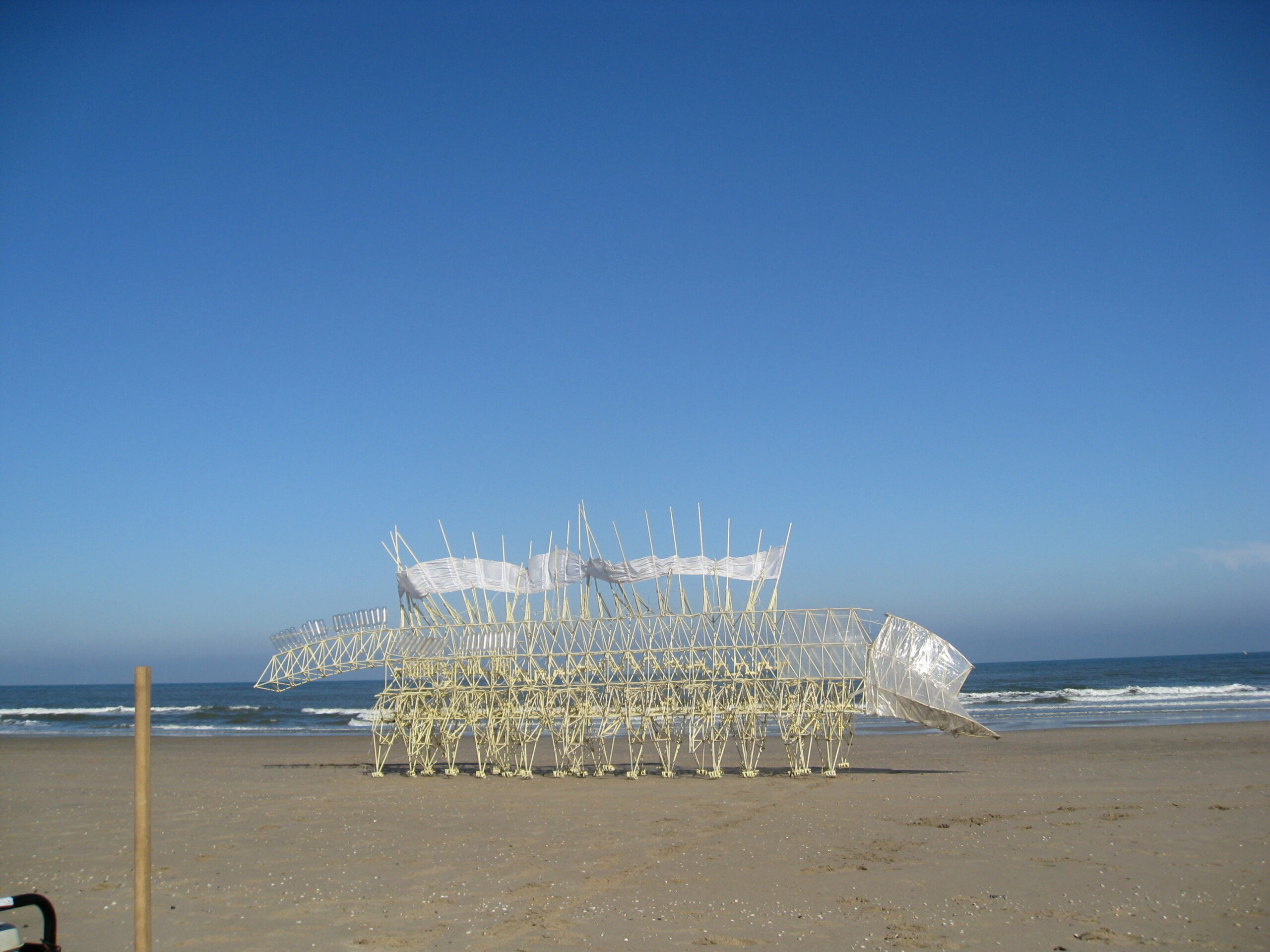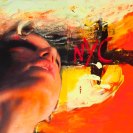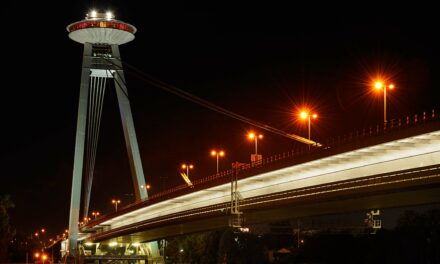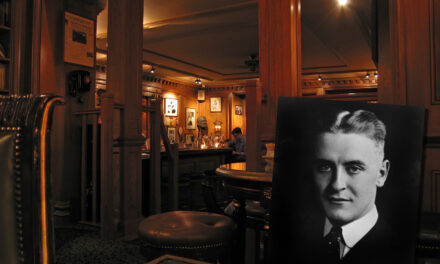
Courtesy of Theo Jansen
The Dutch know Theo Jansen as the man who has spent two decades building beach animals. At the turn of the century, the international art community took notice of his enormous and complex skeletal creatures that were able to walk along beaches of the Netherlands. All they needed to survive was some wind power.
Since 1990, the kinetic sculptor and engineer has concentrated his energy on his Strandbeest project – “strand” being the Dutch root for beach and “beest” meaning beasts, or monstrous animals. For 11 months of the year, Jansen is buried in his studio/laboratory in Ypenburg, Holland, five miles inland from the beach. He tests his crafted designs in May along the coastline, and then travels to global conferences like TED to speak of new forms of life he calls “new nature”.
While animals may need pollen, seeds and water to survive, Jansen’s new forms are artificial. Born as an algorithm, they do not need engines, sensors or other electronic devices to maneuver in the wind. The multi-legged insects consist of up to 3000 PVS tubes – multi-functional and flexible plastic tubes manufactured in Holland for household electrical cords. Measuring on average 10 meters long, four meters wide, and 4.4 meters tall, these creatures are held together by cable ties, nylon thread, and adhesive tape.
Wherefore art thou wind?
Part engineering, part art, the mechanism starts with the stomach, which stores wind energy, and ends with the vertebrate, which controls leg movements. Inside the stomach, recycled plastic bottles contain air that can be pumped up via bicycle pump, to a high pressure by the wind. The pumps are driven by the wings of the animal that flap in response to the wind. A few hours later, the bottles are full; take off its cap and the air will escape the bottle at high speed. With the help of “pushing muscles” – tubes moving in and out through a rubber ring that acts as a piston – the animals move. The leg system is powered by a rotating backbone, which moves in circular movement. The rotation, determined by twelve 13-inch long tubes, reaches optimal results. Jansen estimated the proportions using an algorithm program in an Atari computer.

Courtesy of Theo Jansen
Prior to Strandbeest, Jansen began his artistic career as a painter in the 70’s. His interests morphed to robotics (3D forms) and astronautics.
In the early 80s, with aid of his physics degree, Jansen built a flying saucer he flew over Delft, South Holland. Spooking its residents, Jansen became an immediate media grabber. He then built robots that gathered sand. Without losing touch with his artistic talents, he built a graffiti- drawing robot he called “the painting machine”.
The 62-year-old artist wrote of his projects in The Great Pretender where he explored numerous theories of life. His interest in designing living and autonomous organism using algorithm programs of artificial life simulations has led to his Strandbeest creation in the late 80s. In recent years, Jansen has concerned himself with their survival instead of their aesthetics. He looks forward to their sophisticated potential – a designed nervous system and brain to make complex decisions. “The brain will in the future contain a time mechanism, which runs parallel with the tides of the sea so they will know in advance when the sea is coming,” he was quoted as saying.
But first, he needs to resolve the burden of storms. With strong winds knocking down some of the animals, others bury their nose in the sand to anchor themselves when detecting strong winds. But Jansen helps them out when they get stuck in water holes or by waves. “They have sensors that feel the seawater,” Jansen explains. As tubes swallow water instead of air, the creatures walk in the opposite direction from the sea in resistance.
With his recent purchase of 50 kilometers of PVS tubes from a local factory, he anticipates a solution in the next two decades. Though he has worked in other mediums, such as polyester and steel, he prefers his tubes. “They are cheap and allow best flexibility,” Jansen argues. “Besides, they don’t rust.”
Asked about building human models, Jansen comments, “Building a human version is more complicated.” Instead he hopes to “seduce people” to form special bonds with his creatures and care for entire herds at a time. “They charm people,” Jansen remarks. “People smile, even those who have nothing to do with art.”





